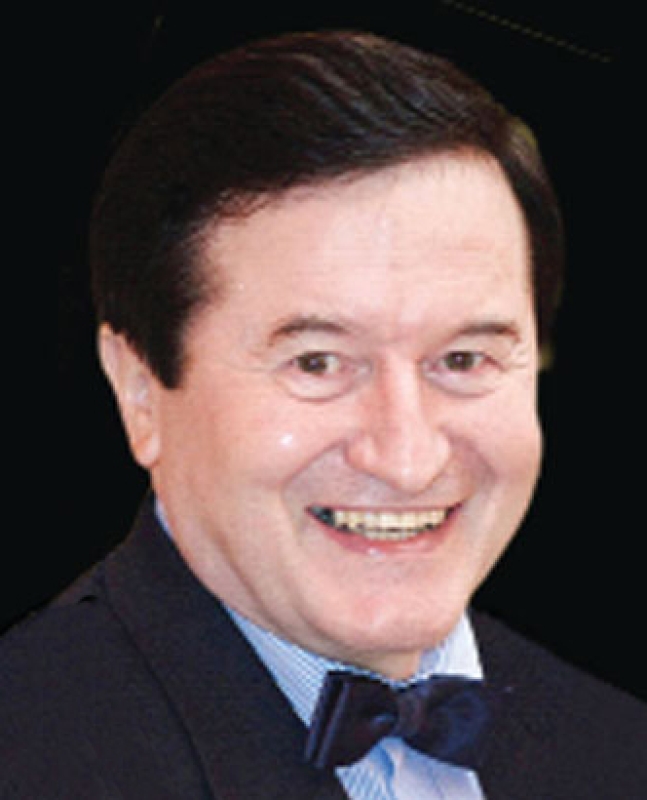- Intimidation or bloodshed cannot halt Bangladesh’s march to democracy |
- Khaleda Zia integral to an important chapter in BD history: Yunus |
- Enthusiasm marks Victory Day celebrations across Bangladesh |
- Dhaka-Delhi ties deep; to be shaped by trust, dignity, mutual respect |
- EU deploys election observation mission to Bangladesh |
Anti-Discrimination Movement in Martyrs Roll of Honour

Sir Frank Peters.
Sir Frank Peters
The National Martyrs Memorial – the brain-child of renowned structural engineer, architect, and designer Syed Mainul Hossain (1952 – 2014) located in Savar, hasn’t had as many eyes gaze upon it as it deserves, primarily because of its location, Dhaka’s horrific traffic situation, and extremely poor marketing.
To many it is something that’s just there, forlornly isolated in the wilderness that very few tourists (local or overseas) ever get to see.
All of that, however, is peripheral and does not detract one iota from its unique iconic magnificient design. In essence it is the admirable Bangladesh answer to ¬– and surpasses in many respects – the idolized Sydney Opera House. The monument has more history, soul, and a heart that rhythmically beats with pride throughout the nation.
The awesome eye-catching architecture consists of seven pairs of triangular-shaped walls or prisms, each varying in size in its height and base, the outermost pair being the shortest in height while also being the widest in span, the inner pairs gradually change their aspect ratio and the innermost pair thus forms the peak point of the architecture.
Unlike a single brick of Australia’s Sydney Opera House, each of these seven pairs of walls represents the bravery, determination, valor, and sacrifice of the Bangladesh people to gain independence, the blood of many martyrs, and represent significant chapters and monumental milestones in the history of Bangladesh. Yes, it is something for every Bangladeshi bar none to gaze upon, hand on heart, and feel intense pride.
All are equal
Although all walls are different sizes, all are equal in stature, and not one wall is of any greater importance than the other. It is as if there were a subliminal message intermixed with the cement telling us we’re all children of Allah. Nobody is above us and nobody is below us and like a beach, every grain of sand is of equal importance. We, too, are all equal in His eyes.
Much similar to the pilgrims who visit Mecca garbed in the same simple plain white cloth, no decorations or jewellery of any description. One could be rubbing shoulders with Presidents, Prime Ministers, Billionaires or the poorest of the poor, but one could not tell. In some regards the National Martyrs Memorial or Jatiya Smriti Saudha, as known in Bengali, could be viewed symbolically as the hands of the nation joined in collective solemn prayer reaching up to heaven, seeking the blessings of Allah for the patriots and martyrs it represents.
Namely; the 1952 Bengali language movement, the 1954 provincial election victory of the United Front, the 1956 Constitution Movement, the 1962 East Pakistan Education movement, the 1966 six point movement, the 1969 mass uprising, and the climactic event of the 1971 Liberation War (through which Bangladesh became a separate independent sovereign state).
After all these noble sacrifices and deaths – and seemingly very few valuable lessons learned – did anyone envision the possibility that sometime in the future another wall might be needed to pay due homage and respect to other deceased patriots, like the Anti-Discrimination Students Movement of recent, who courageously sacrificed their lives?
The answer is a definite no. There was no looking back for Bangladesh, it was thought. The nation was moving forward and what happened in the past was confined to the past, and could not happen ever again. How wrong they were.
However, if we look closely, perhaps another wall of homage, remembrance, and honour isn’t necessary. When Syed Mainul Hossain designed Jatiya Smriti Saudha the concept formed in his brain and transferred to paper, was undoubtedly through divine guidance.
Could it be that the Anti Discrimination Students Movement of 2024 was prophesised and is already subliminally incorporated in the revered design of 1977?
Those who are open-minded and view the National Martyrs Memorial with that thought in mind will see a transformation to their perception – a revelation – real or imaginary, as never previously seen.
They will see an upright gigantic “A” supporting all the sacred walls of glory. Could this ‘A’ be foretelling and representing the Anti-Discrimination Students Movement taking their rightful place among the heroes and martyrs in the service of justice?
No one can tell for sure, but we do know for certain that in the annals of Bangladesh history the Anti-Discrimination Students Movement will be etched in marble as a blessing and timely gift from Allah.
Sir Frank Peters is a former newspaper and magazine publisher and editor, a humanitarian, a royal goodwill ambassador, an Honorary Member of the Bangladesh Freedom Fighters and a foreign non-political friend of Bangladesh <SirFrankPeters@gmail.com>)

